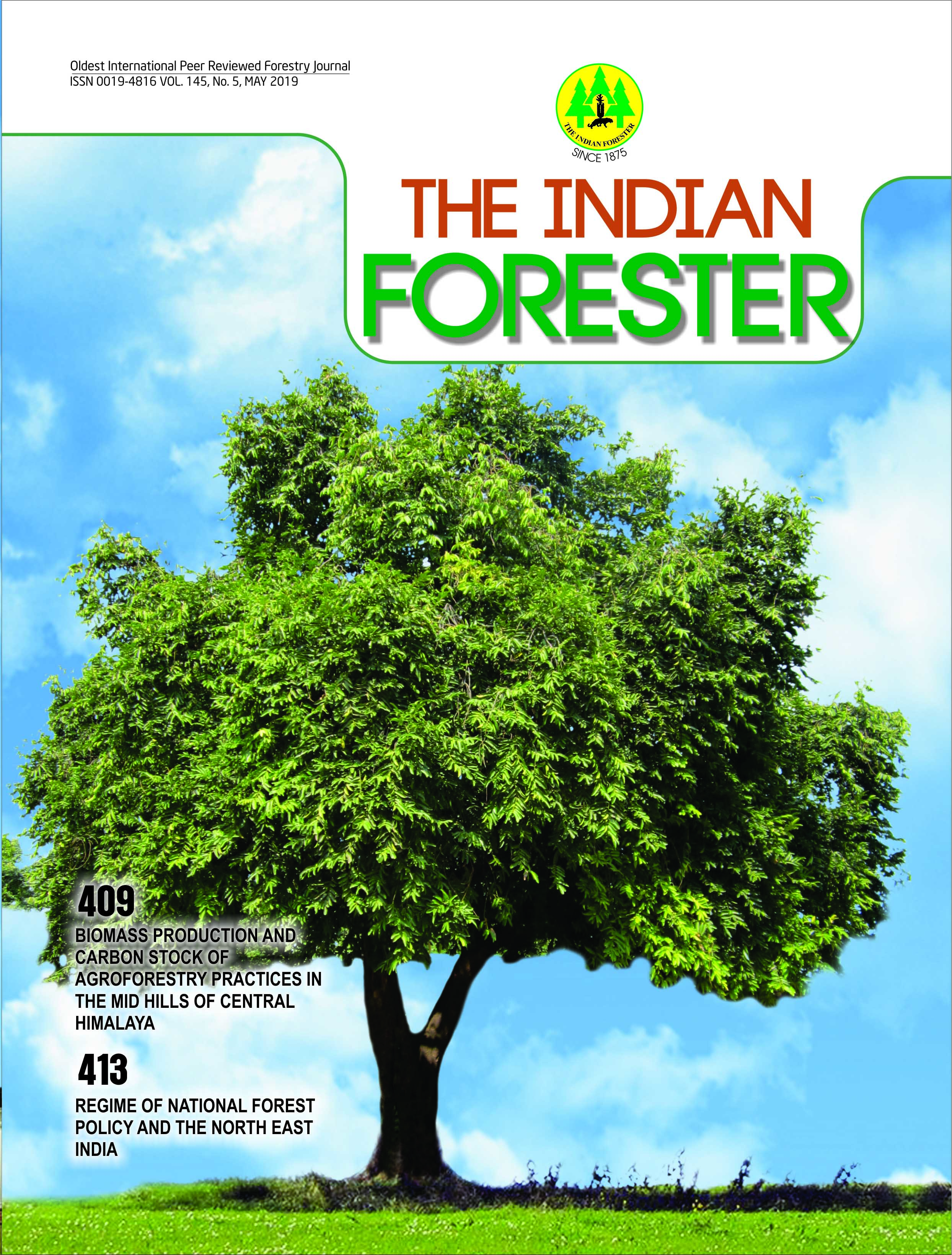Establishment Strategies of Fodder Trees and Shrubs to Compensate Fodder Demand
DOI:
https://doi.org/10.36808/if/2019/v145i5/145700Keywords:
Strategies, Management, Fodder, Trees and shrubs, Livestock.Abstract
Availability of adequate quantity of fodder is essential for improving livestock productivity and still there exists a substantial gap between the demand and availability of fodder. Hence, this study revealed about some strategies and common fodder's (trees and shrubs) extraction practices to improve sustainable resources. Following measures may be taken for ensuring maximum fodder availability for sustaining livestock production. Whereas, strategies need a proper management like improved fodder banks in the forest margin, wastelands and through planting in diverse agroforestry fodder production models. The followed strategies and establishment have been improving livestock health and changing the local communities whose survival with depending upon the exploit of their animals.References
th and 19th Indian Livestock Census. (2003 and 2012). All India Summary Report, Department of Animal Husbandry, Dairying and Fisheries, Ministry of Agriculture and Farmers Welfare, Government of India.
Abington J.B. (1992). Sustainable livestock production in the mountain agro-ecosystem of Nepal. FAO animal production and health paper, food and agriculture organization of the United Nations, Rome. 134 pp.
Calub B.M. and Lasco R.D. (1999). Indigenous trees and shrubs as fodder in the drought-prone areas of Batangas. Proceedings of the 36th Annual Convention of the Philippine Society of Animal Science. Manila, Philippines; SAS.
Chriyaa A. (2005). The use of shrubs in livestock feeding in low rainfall areas. In Land Use, Land Cover and Soil Sciences, Volume 5. Encyclopedia of Life Support Systems: (UNESCO Eds.). Oxford, UK: UNESCO and Eolss Publishers.
Datta D. (2013). Indian fodder management towards 2030: A case of vision or Myopia. Inter. J. Management and Social Science Research, 2 (2):33-41.
Elevitch C.R. and Wilkinson K.M. (2000). Agroforestry Guides for Pacific Islands. Permanent Agriculture Resources, P.O. Box 428, Holualoa, HI 96725.
Grover D.K. (2012). Economics of production, processing and marketing of fodder crops in India (consolidated report).
Agro-Economic Research Centre, Department of Economics and Sociology, Punjab Agricultural University, Ludhiana, 1 pp.
Jamala G.Y. Tarimbuka I.L., Moris D. and Mahai S. (2013). The scope and potentials of fodder trees and shrubs in agroforestry. J. Agriculture and Veterinary Science, 5 (4):11-17.
Joshi D.D. (2000). Impact of national parks and tourism on yak farming system in the alpine Himalayan region of Nepal. Yak Newsletter (International Yak Information Centre) 12-13. pp.
Kang B.T., Reynolds L. and Atta Krah A.N. (1984). Alley farming. Advances in Agronomy, 43:316-359.
Komwihangilo D.M. Sendalo D.S.C. Lekule F.P. Mtenga L.A. and Temu V.K. (2001). Farmers' knowledge in the utilization of indigenous browse species for feeding of goats in semi arid central Tanzania. Livestock Research for Rural Development, 13(6) http://www.lrrd.org/lrrd13/6/komw136.htm.
Nsahlai I.V., Umunna N.N. and Negassa D. (1995). The effect of multi-purpose tree digesta on in vitro gas production from Napier grass or neutral-detergent fibre. J. Science of Food and Agriculture, 69: 519-528.
Paudel K.C. and Tiwari B.N. (1992). Sustainable livestock production in the mountain agro-ecosystem of Nepal, Fodder and Forage Production, FAO Corporate Document Repositore, Agriculture and Consumer Protection. http://www.fao.org/docrep/004/T0706E/T0706E07.htm
Reddy D.V. (2006). Production of forage in the Indian context. In: Fodder production and grassland management for veterinarians. Oxford & IBH Publishing Co. Pvt. Ltd. New Delhi. 453 pp.
Solorio S.F.J. and Solorio S.B. (2002). Integrating fodder trees into animal production system s in the tropics. Tropical and Subtropical Agroecosystems, 1:1-11.
Standing Committee on Agriculture, (2016-2017). Steps taken to bridge the gap between the demand and availability of fodder through sub-mission on fodder and feed development. Thirty Fourth Report, Lok Sabha Secretariat New Delhi, 26 pp.
Steven F., Sammy C., Ben L., Judith S. and Charles W. (2014). Fodder trees for improving livestock productivity and smallholder livelihoods in Africa. Current Opinion in Environmental Sustainability, 6:98-103.
Thornton P.K. (2010). Livestock production: recent trends, future prospects. Philosophical Transactions of the Royal Society of London. Series B, Biological Sciences, 365 (1554):2853-2867.
Downloads
Downloads
Published
How to Cite
Issue
Section
License
Unless otherwise stated, copyright or similar rights in all materials presented on the site, including graphical images, are owned by Indian Forester.





